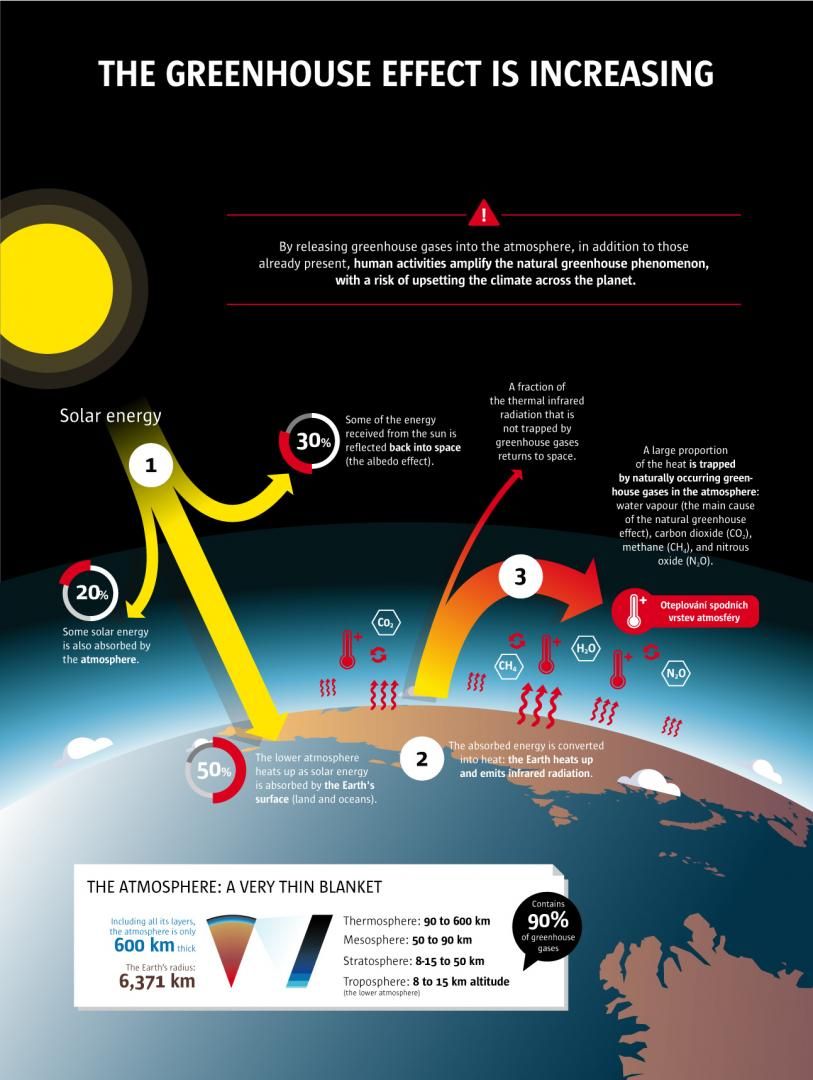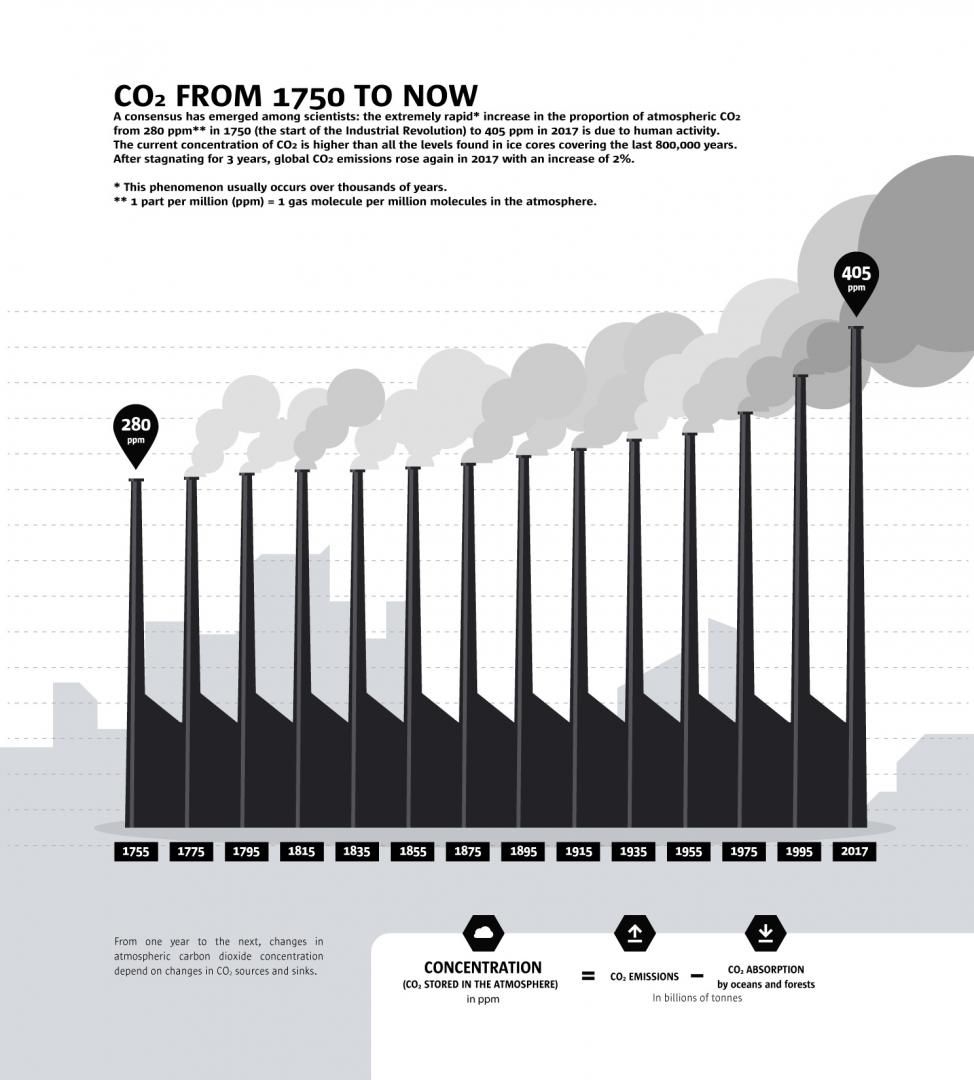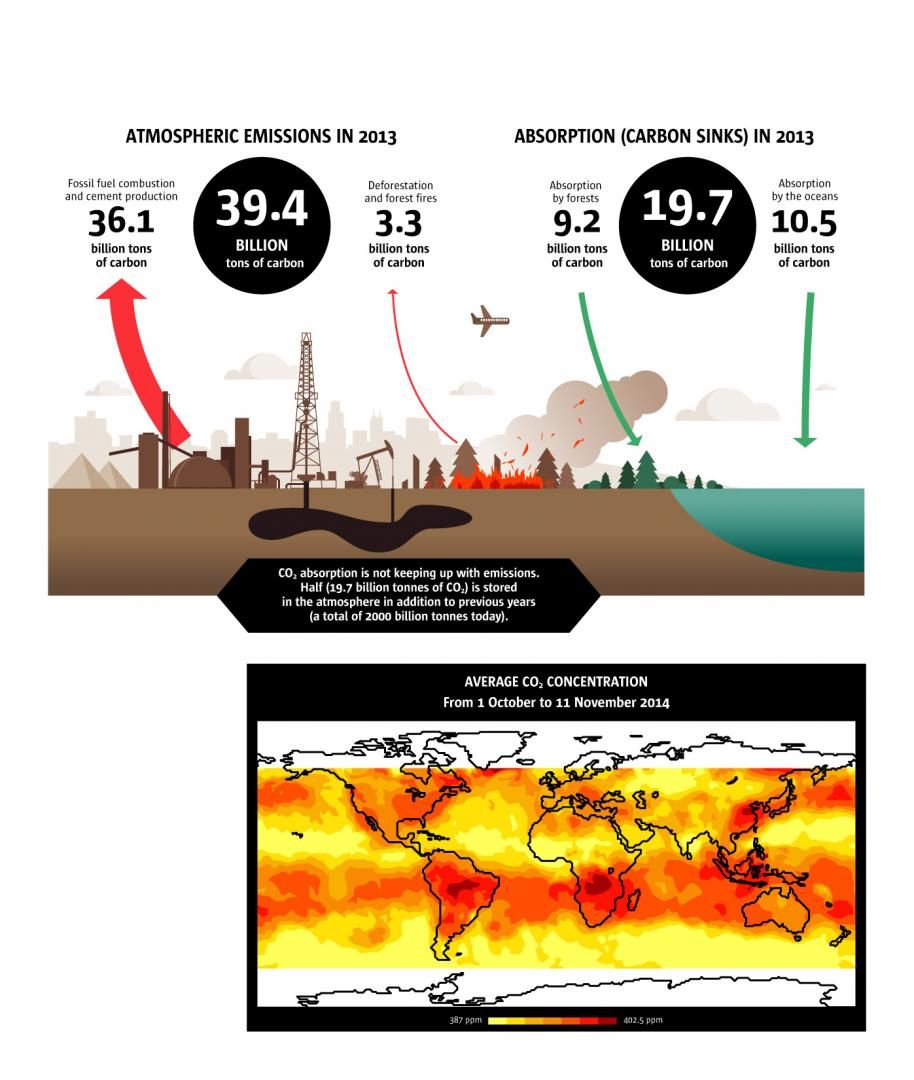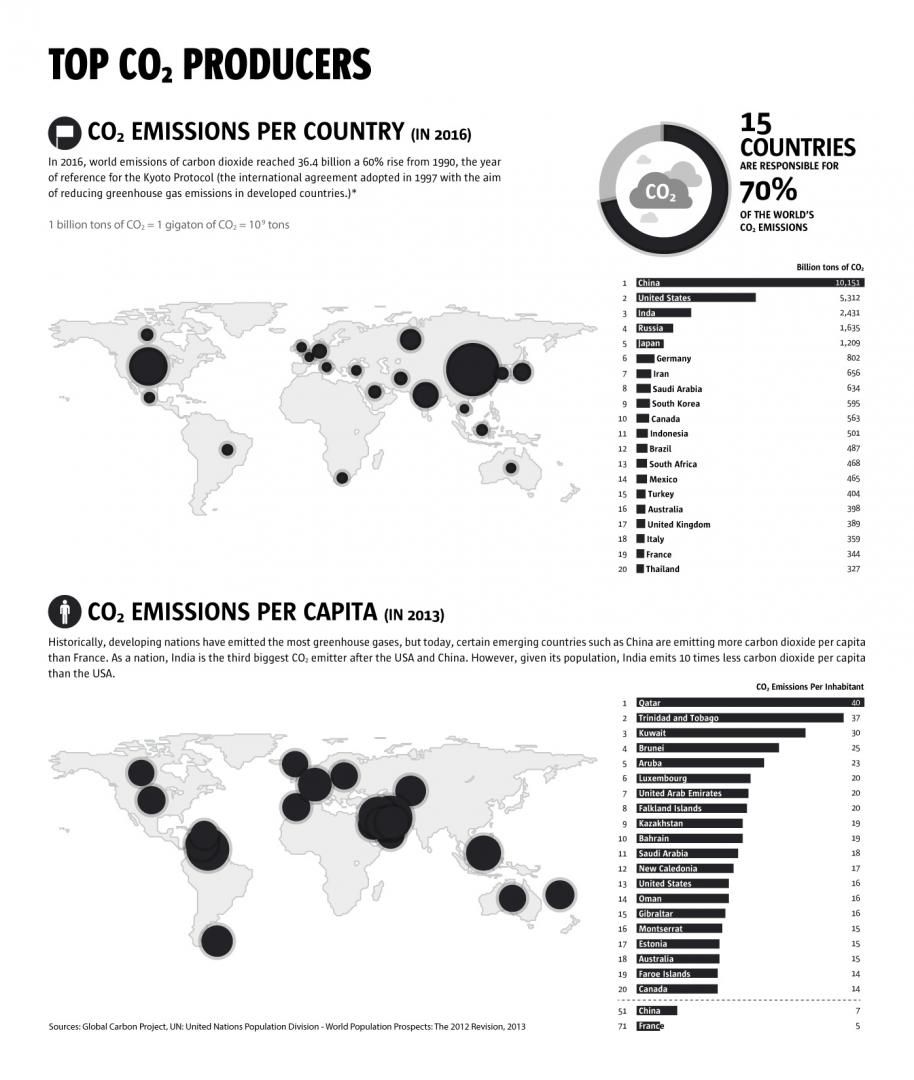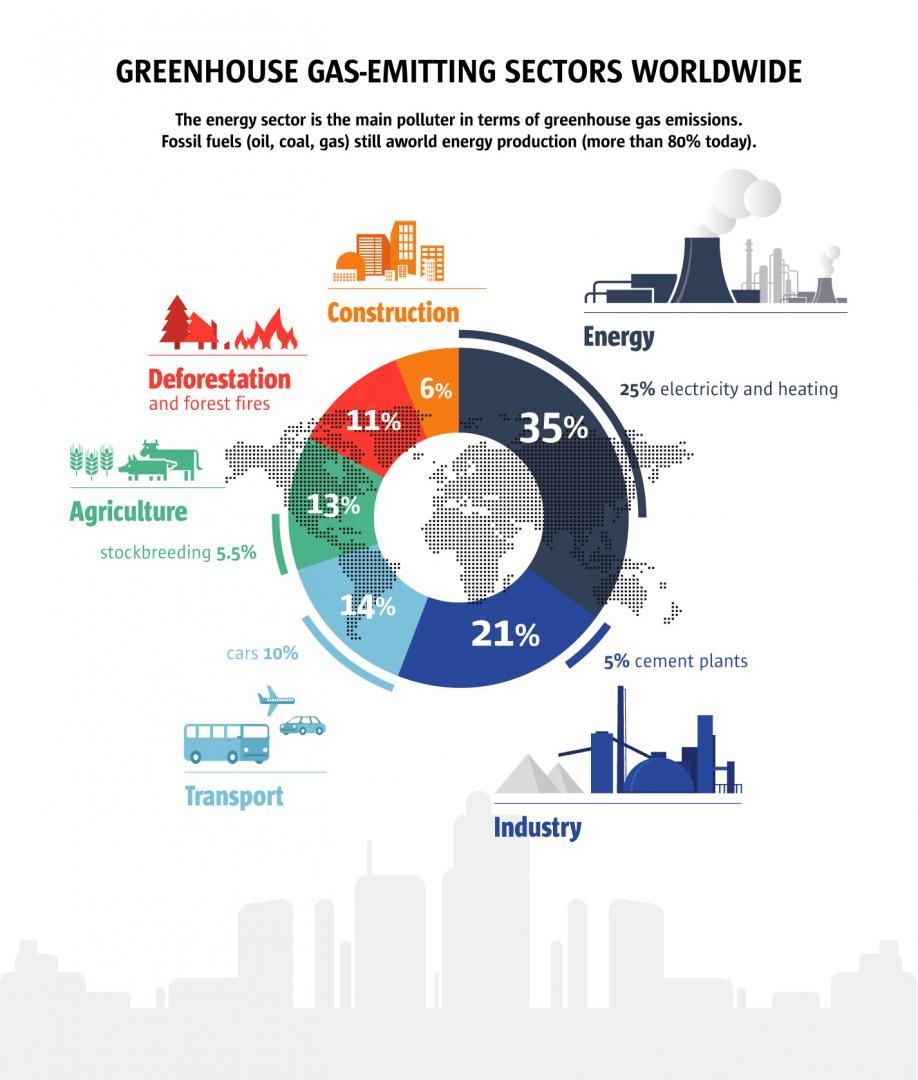
Isabelle Bousquet - Published on , updated on
It is a fact that our planet’s surface is warming, but why? Many factors influence the Earth’s climate. Firstly, the Sun – the driving force behind the climate system – but also volcanic activity and the greenhouse effect. Certain greenhouse gases are naturally present in the atmosphere and trap heat on the Earth’s surface, keeping the average temperature at +15°C when it would be -18°C without them. Since the Industrial Revolution, human activity (industry, energy, construction, transport, agriculture, deforestation, etc.) linked to very high population growth has also produced greenhouse gases which have joined those already present in the atmosphere. Despite the arguments of those who call themselves ‘climate sceptics’, climatologists are virtually 100% certain that human contribution to the greenhouse effect is responsible for most of the global warming observed since 1950.
Pulling the Strings Of Climate
The Sun, volcanic activity, the natural greenhouse effect and recently, human activity: many factors influence the Earth’s climate.
A number of natural factors affect the Earth’s climate – primarily the Sun, which is the driving force behind the climate system. The amount of solar energy reaching the Earth varies. It depends on the tilt of our planet’s axis of rotation and the configuration of its orbit around the Sun. These astronomical parameters have resulted in the glacial and interglacial periods that feature in the record of variations in the Earth’s climate over the last few million years. Volcanic activity also impacts on the Earth’s climate, as does the greenhouse effect. Certain gases present in the atmosphere, such as water vapour, carbon dioxide (CO2) and methane (CH4), retain part of the heat received from the Sun. Without these greenhouse gases (GHGs), the average temperature on the Earth’s surface would be -18°C instead of +15°C, so they have always been essential to the development of life on Earth. On a geological time scale (millions of years), the natural greenhouse effect has varied, especially according to volcanic activity and the specific capacity of the oceans to capture carbon dioxide during glacial stages. Since the start of the industrial age (200 years ago), human activity has been adding GHGs to those naturally present in the atmosphere. This supplementary greenhouse effect is increasing atmospheric warming and, according to the IPCC (5th report), can explain observed global warming since 1950.
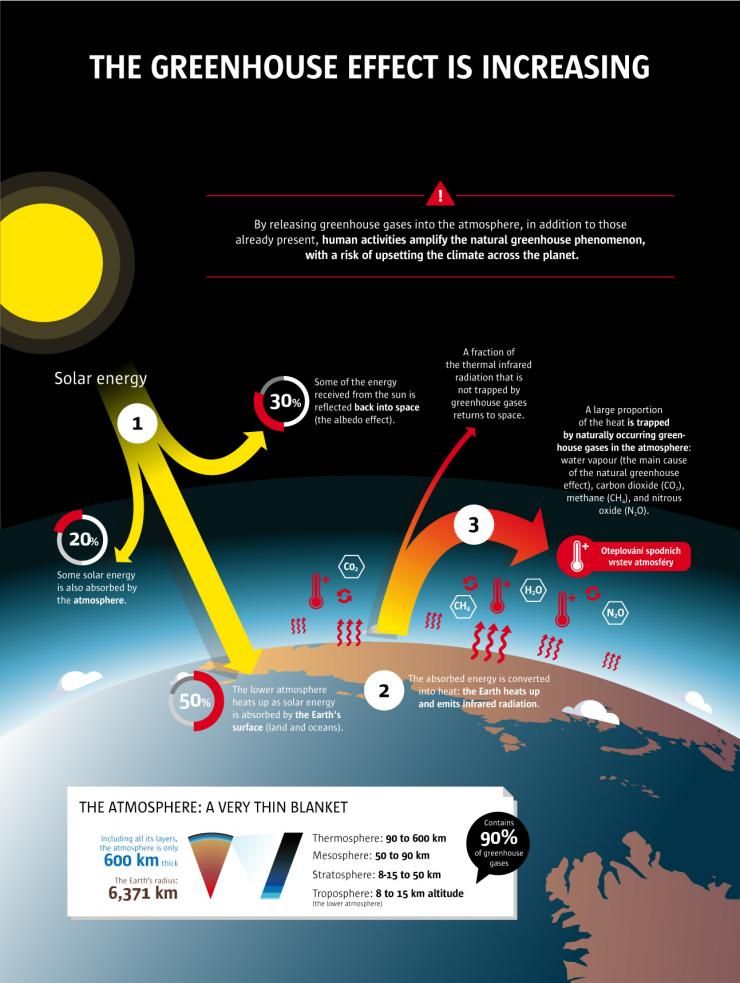
Human Responsibility for Global Warming
According to the latest scientific data, there is now virtually no doubt that humans are mainly responsible for the warming observed since 1950.
For the Intergovernmental Panel on Climate Change (IPCC), it is ‘extremely probable’ that human activity (use of fossil fuels, intensive farming, deforestation, etc.) is the main cause of the warming observed since 1950, because of the greenhouse gases released into the atmosphere. To identify changes in the composition of the atmosphere over time, scientists combine direct measurements and the results of their analyses of air from the past trapped in Antarctic ice. The conclusion is that increase in the proportion of CO2 began at the start of the industrial revolution. This increase has been accompanied by a reduction in oxygen, showing that the additional carbon dioxide is produced by combustion processes, i.e. by human activity. Another argument that tends to confirm the impact of human activity on the climate is that climate models based solely on natural factors (variations in solar activity and volcanic eruptions) cannot explain the warming observed since the 1950s. So anthropogenic greenhouse gases play a dominant role in the rise of world average temperatures, although this is partially offset by the cooling effect of certain polluting particles also produced by human activity.
CO2, the main gas accused
Carbon Dioxide makes up more than half the world’s emissions of greenhouse gases (GHGs) caused by human activity.
Human activity releases different greenhouse gases into the atmosphere: carbon dioxide (CO2), methane (CH4), nitrous oxide (N2O), ozone (O3), HCFCs (substitutes for the CFCs banned by the Montreal protocol in 1987), etc. CO2 is produced by the combustion of fossil fuels and forest fires. CH4 is emitted by rice fields, ruminant digestion and leaks during the transport or use of natural gas. N2O is emitted by certain industrial processes and by the soil’s transformation of nitrogen fertilisers; O3 is produced by pollutants emitted by vehicles, heating and certain industries. CFCs, which are still present in the atmosphere, were long used as refrigerating or propellant gases. CO2 makes up more than half the world’s emissions of greenhouse gases (GHGs) caused by human activity, far in front of CH4 (15%), O3 (12%), CFCs (11%) and nitrous oxide (5%). That is why we measure the effect of the other GHGs as CO2 equivalent. Also, the CO2 accumulating in the atmosphere has a very long lifespan (up to several thousand years) so at least 20% of current emissions will still have an impact on the atmosphere in 1,000 years’ time. That is not true of Methane: while it has a warming effect 23 times greater than carbon dioxide, its lifespan is much shorter (10 to 20 years). So CO2 is mainly responsible for the greenhouse effect caused by human activity (a ‘radiative forcing’ of 1.7 watts/m2 out of a total 2.3 watts/m2).
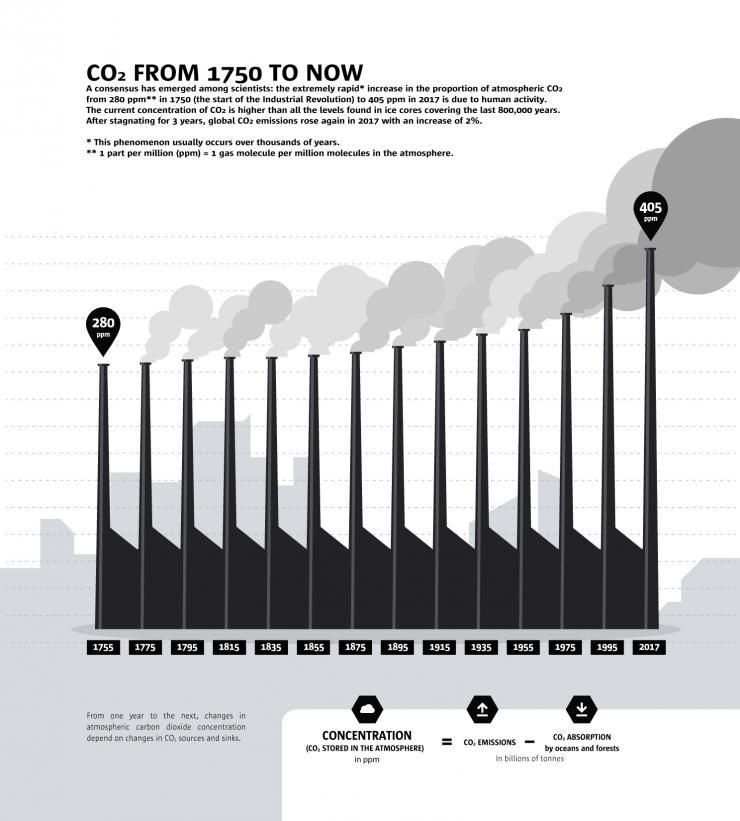
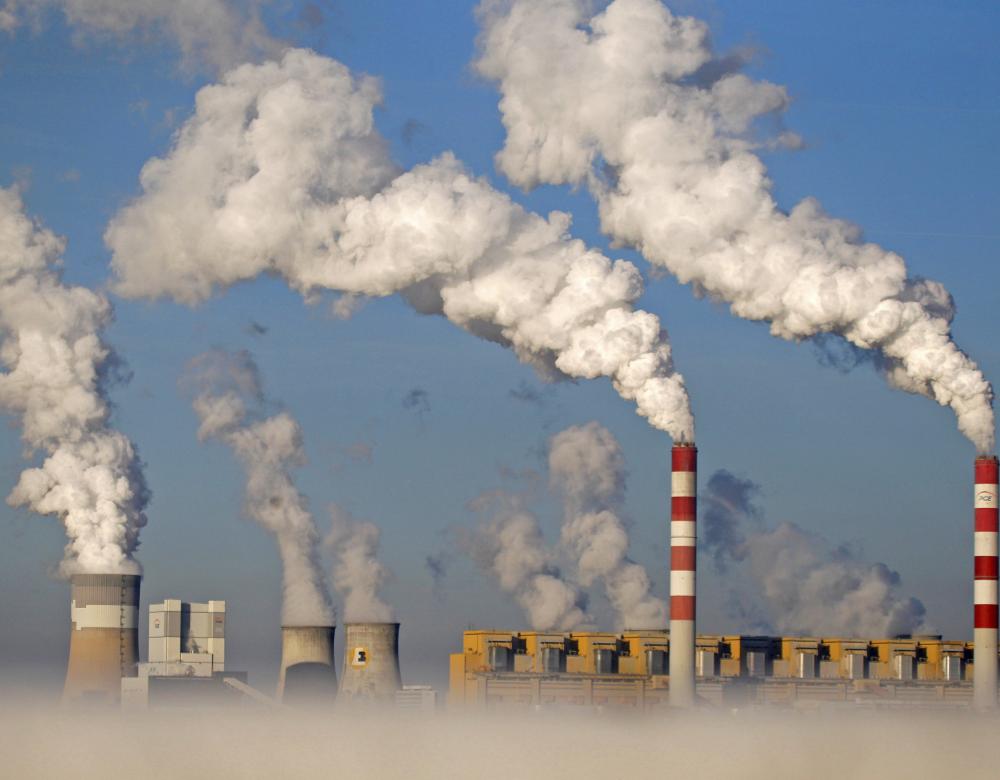
Ultra-Polluting Coal
Coal is the biggest pollutant of all the fossil fuels. Its combustion produces 43% of the world’s CO2 emissions, followed by oil (33%) and natural gas (18%). China alone accounts for almost half the world’s coal consumption. In Europe, Germany consumes the most coal, which it uses to generate electricity, ahead of Poland (here, the Belchatow power station) and the UK.
Shrinking Forests
Over the world, forest fires and deforestation (particularly the massive destruction of tropical forests) account for 11% of greenhouse gas emissions into the atmosphere. They are the second source of carbon dioxide emission after the combustion of fossil fuels. Not only is CO2 released by fires, but the vegetation destroyed can no longer play its vital role in absorbing CO2 by photosynthesis.
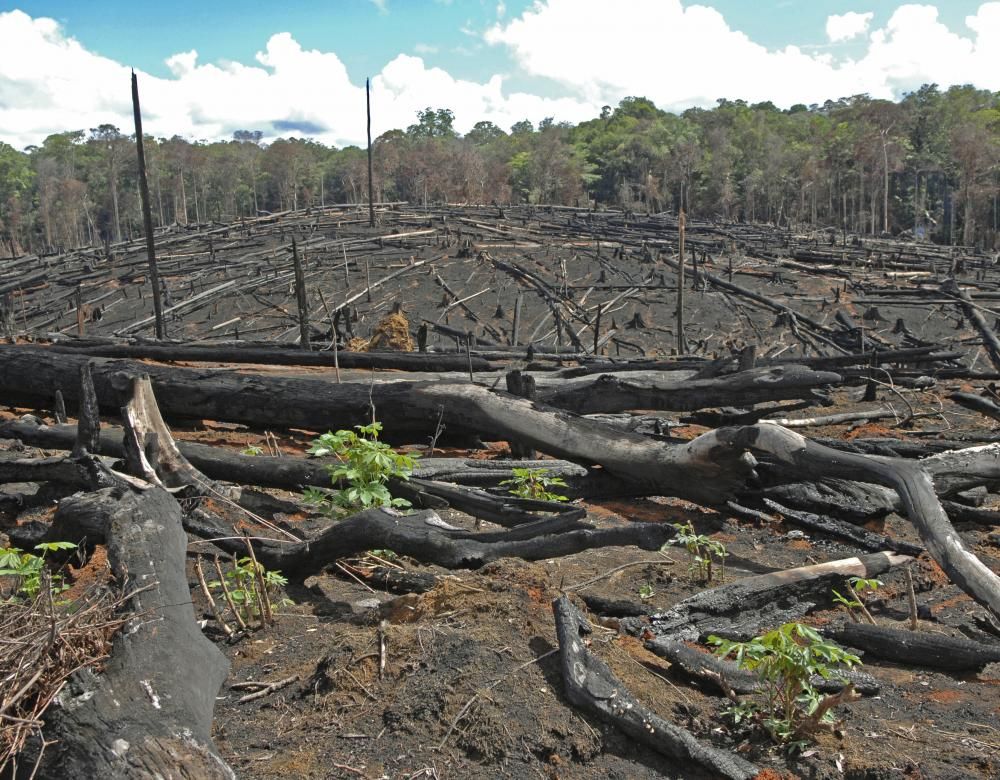
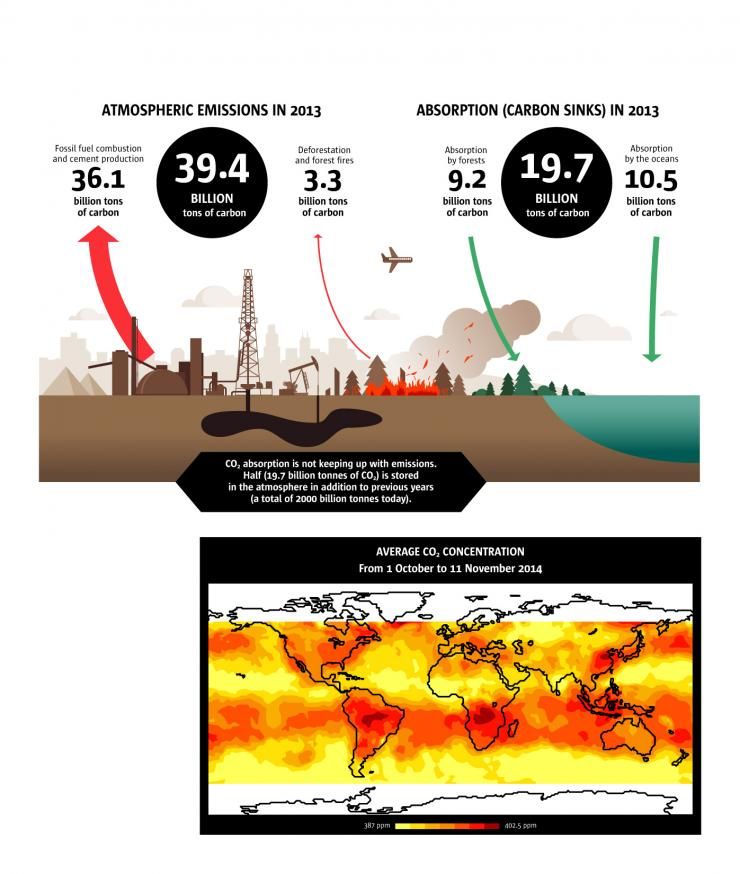
Climate Specialists
20,000 scientists are conducting research into the climate and its past and future variations.
The IPCC’s task is to produce reports that review the state of our knowledge. Climatology is a multidisciplinary, international science. Physicists, chemists, glaciologists, statisticians, oceanographers, meteorologists, geologists, astronomers, biologists, historians, geographers – in all, 20,000 scientists all over the world, including around a thousand in France – are of fossil fuels, intensive farming, deforestation, etc.) is the main cause of the warming observed since 1950, because of the greenhouse gases released years to come. Assisted by computer scientists and mathematicians, they are developing powerful computer models that are able to simulate the climate system and predict future developments. Meanwhile, technicians and engineers are devising innovative, increasingly efficient measuring instruments (probes, satellites, etc.). Five organisations are monitoring changes in the average temperature on the Earth’s surface: the National Oceanic and Atmospheric Administration (NOAA) and National Aeronautics and Space Administration (NASA) in the USA, the Met Office’s Hadley Centre in the UK, the University of California, Berkeley, and the Japan Meteorological Agency. Each year, thousands of scientific papers on climatology are published, so regular reviews of the state of knowledge in the field are needed. That is the job of the Intergovernmental Panel on Climate Change (IPCC) set up in 1988 by the United Nations and the World Meteorological Organisation (WMO), whose reports (the 5th was published in 2013 and 2014) are written by hundreds of people on the basis of scientific publications and checked by more than 1,000 researchers. This scientific institution set up collectively and approved by all our governments provides the basis for international climate talks.
Air Trapped in Ice
The analysis of 800,000 years of CO2 and temperatures in Antarctic ice shows that along with global warming, the concentration of carbon dioxide in the atmosphere has increased by 40% since 1750 because of human activity. The European Project for Ice Coring in Antarctica (EPICA) aims to extend the period analysed to over a million years. France’s Subglacial project is developing a new kind of ‘Corer Probe’ using laser technology to achieve this.

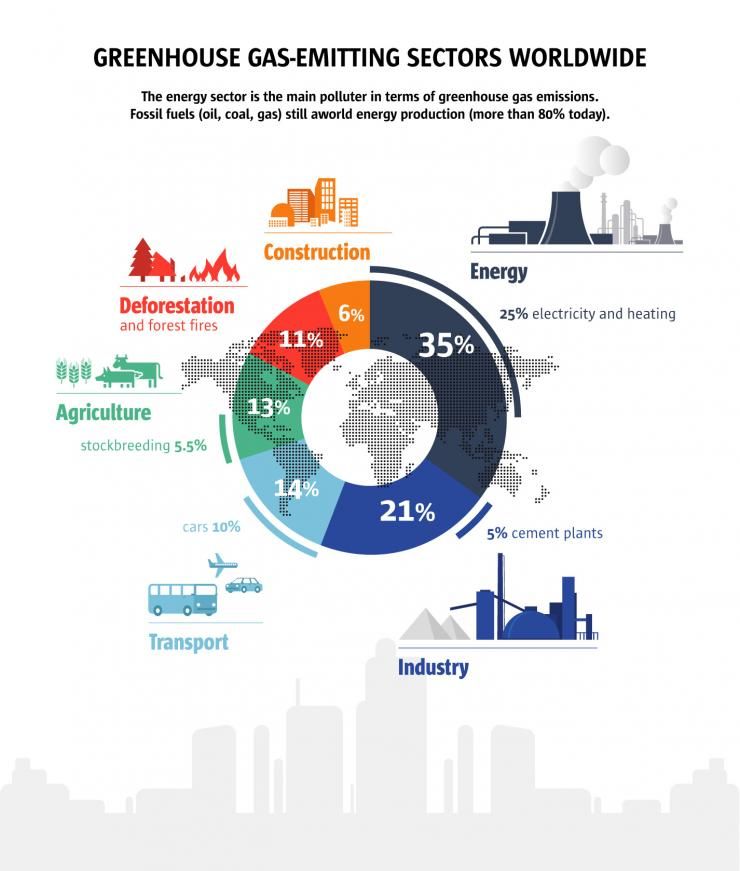
The Sun’s Role
Every eleven years on average, our star becomes more active, which results in an increase in the number of sunspots and the volume of solar energy reaching the Earth. This causes a fluctuation of 0.1°C (at most) of the average temperature on the Earth’s surface. So solar activity alone cannot explain the global warming observed over the last few decades.
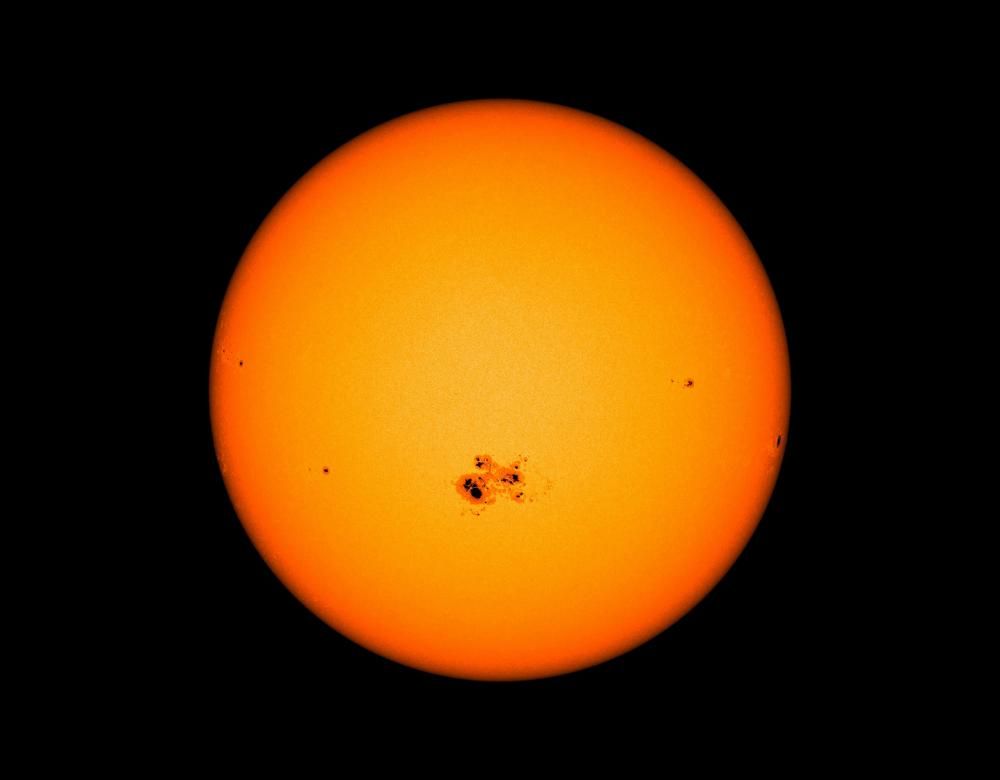
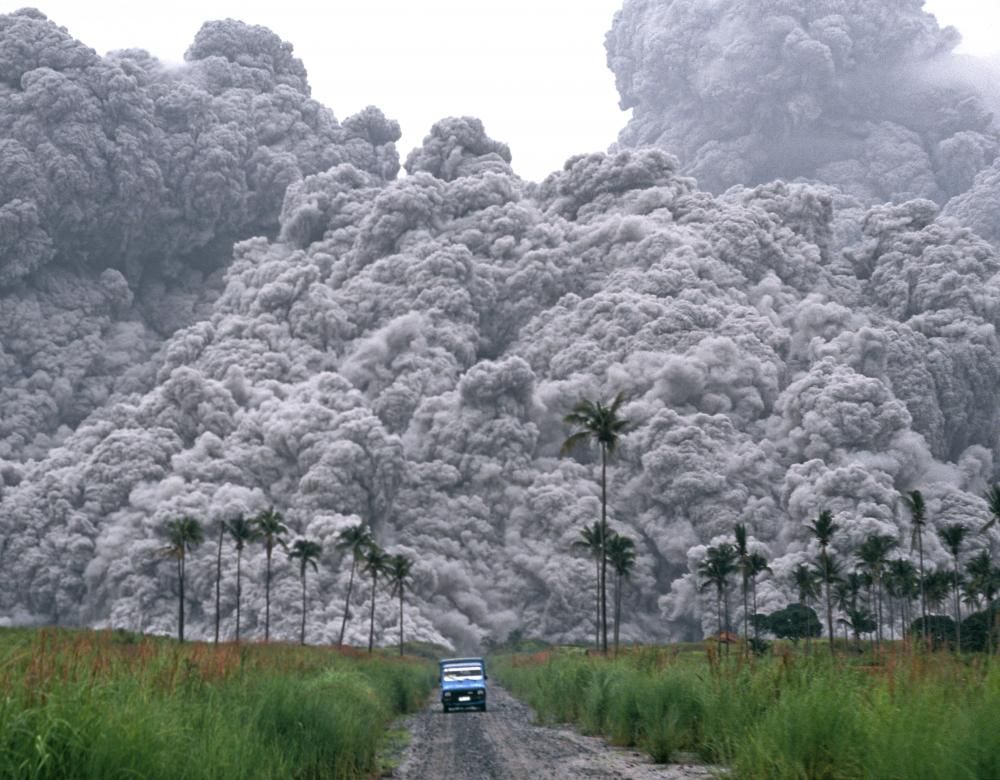
Cooling Particles
When explosive volcanic eruptions eject large quantities of ash and sulphate aerosols, they cause short-term cooling (for one to three years) of the atmosphere. Some polluting particles (industrial and exhaust emissions, smoke from forest fires) also have a cooling effect on the climate, which reduces the warming effect of greenhouse gases.
The Warming Footprint of El Niño
Covering 71% of the Earth’s surface and absorbing 93% of the energy captured by our planet, the oceans play a key role in the climate system. In the short term, the main source of natural climate variability on a global scale is El Niño, a phenomenon involving the warming of the surface waters of the Equatorial Pacific Ocean that occurs every two to seven years. This leads to a series of extreme meteorological events (floods and droughts) in tropical regions and an increase in the average global temperature*. The phenomenon was strong in 2015 and even stronger in 1998.
* The opposite phenomenon also occurs. Called La Niña, it causes a drop in global temperature.
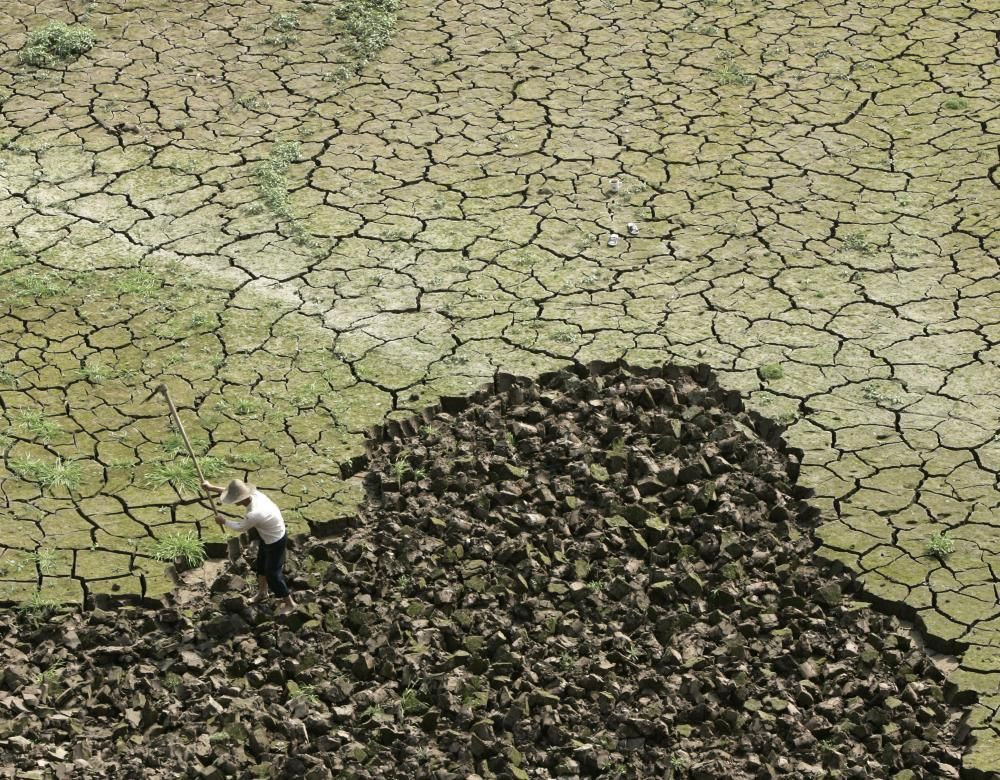
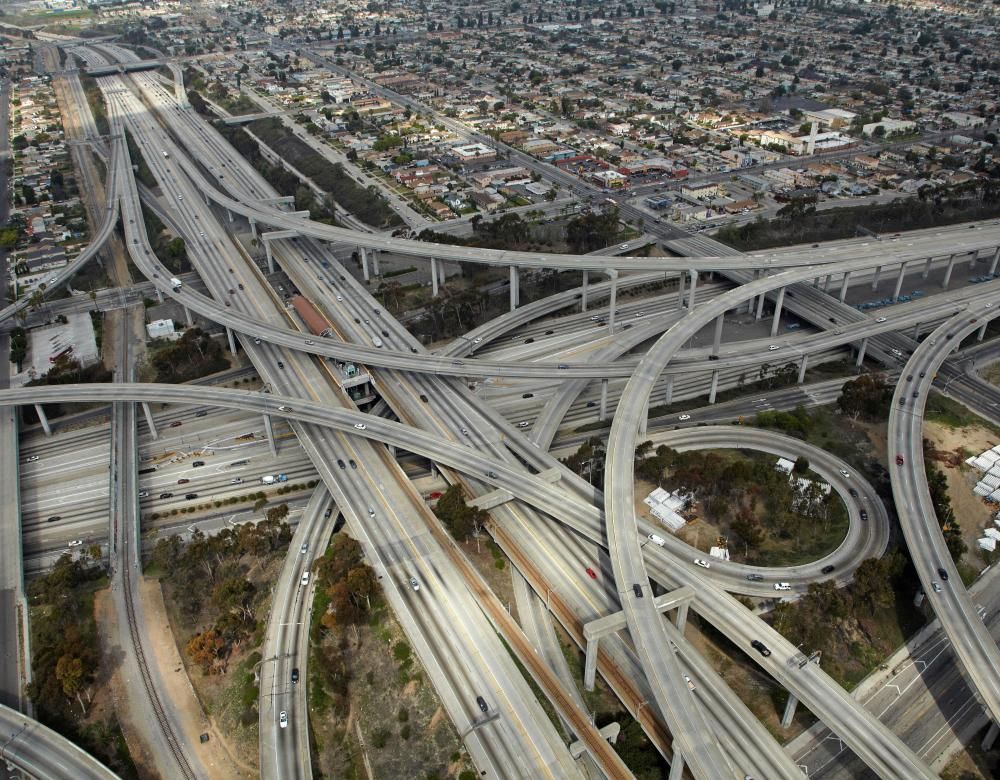
Have We Entered the Anthropocene Epoch?
Some scientists, including Nobel Prize for Chemistry winner Paul Crutzen, believe that the geological Holocene Epoch (which began about 11,700 years ago) has ended and that we have now entered the Anthropocene Epoch, where human lifestyles have become the main modifying influence on the environment.
This dossier is the online version of “Climate. The 360° exhibition” presented at the Cité des sciences de l’industrie in September 2015 on the occasion of COP21, with the support of the BNP Paribas Foundation. The contents were updated in 2018.
